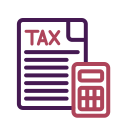Maximizing Tax Deductions in Canada: Practical Ways to Keep More of Your Money
Chosen theme: Maximizing Tax Deductions in Canada. Welcome to your friendly guide for turning everyday spending into smart, compliant deductions. We’ll share stories, tips, and proven strategies Canadians use to reduce taxable income—so you can file with confidence and breathe a little easier at refund time.



Start Here: What Counts as a Deduction in Canada?
Employees can claim certain expenses only if conditions are met and a T2200 is signed, while self-employed Canadians often deduct business-use costs directly. Knowing which category you fall into—and proving it with receipts and reasonable calculations—prevents missed opportunities and avoids stress if the CRA asks questions.
Start Here: What Counts as a Deduction in Canada?
Deductions, like RRSP contributions or moving expenses, reduce taxable income before the tax rate is applied. Credits, like tuition or medical credits, reduce tax payable after it’s calculated. Mastering both magnifies savings, but today we’ll spotlight deductions that often deliver especially powerful results across different incomes.
RRSP Strategy: The Powerhouse Deduction

You can contribute up to 18% of earned income, subject to the annual dollar limit, and unused room carries forward. Many Canadians contribute near the deadline after estimating their income, then strategically claim only part of the deduction now, carrying the remainder forward to a higher-income year for bigger tax impact.





Moving for Work or Business: Make the 40 km Rule Work for You
Eligible moves include starting a new job or business, or moving to study where your award is taxable. Deductible expenses often include movers, storage, temporary accommodations, meals, and travel. Keep contracts, mileage logs, and receipts; a simple folder labeled by date can turn chaos into a meaningful deduction.
Moving for Work or Business: Make the 40 km Rule Work for You
You may deduct real estate commissions and legal fees on the sale of your old home, and some costs to lease your new place. Track mortgage discharge penalties, utilities hook-ups, and even the cost of amending legal documents with your updated address, provided they relate directly to the qualifying move.
Investing and Rentals: Interest and Expenses You Can Deduct
Interest on loans used to earn investment income can be deductible, but keep accounts clean. Use a separate investment line of credit and avoid mixing personal spending. Document the original purpose of each withdrawal so the link between borrowed funds and income-producing assets is crystal clear if anyone asks.
Investing and Rentals: Interest and Expenses You Can Deduct
For rentals, you may deduct reasonable expenses like advertising, insurance, utilities, property taxes, repairs, and management fees. Capital improvements are generally depreciated over time. Keep before-and-after photos, contractor quotes, and completion dates to help classify work accurately and maximize long-term, audit-proof deductions without overreaching.
Employment Deductions You Might Be Missing
T2200 and Required Expenses
If your contract requires you to pay certain costs to earn employment income, your employer can complete a T2200. With that, specific expenses like supplies and certain home workspace costs may be deductible. Keep the signed form, and match every claim to proof of both requirement and payment from your own pocket.
Home Workspace for Employees
When eligible, you can deduct a reasonable share of utilities and supplies used to perform your duties from home. Use a consistent method to calculate the workspace percentage. Keep meeting schedules or task logs showing regular home use—these small details can support your claim if the CRA asks for clarification.
Union and Professional Dues
Union dues and many professional membership fees remain reliable employment deductions. Set up automatic downloads of annual statements from your union or association portal and tag them in cloud storage. Then, when tax time arrives, you’ll claim confidently instead of digging through old emails and expired links.
Receipts, Records, and Audit-Proof Confidence
Create simple folders named by category—RRSP, Business, Vehicle, Moving, Rental—and drop receipts in immediately. Every Sunday, snap photos and rename files with date, vendor, and purpose. Fifteen minutes a week can turn April anxiety into calm, accurate claims that stand tall under the brightest audit lights.
Join the Conversation and Keep Learning
We publish seasonal checklists, deduction deep dives, and gentle reminders before key deadlines. Subscribe today and get practical guidance you can actually use—especially when your year includes changes like a move, a new side-hustle, or rental renovations with big deduction potential.


Join the Conversation and Keep Learning
Post your deduction dilemmas in the comments—vehicle logs, home office math, RRSP timing, or moving documentation. Your question might unlock savings for someone else too. We’re building a helpful, judgment-free space where Canadians learn together and celebrate the wins that come from good records.
